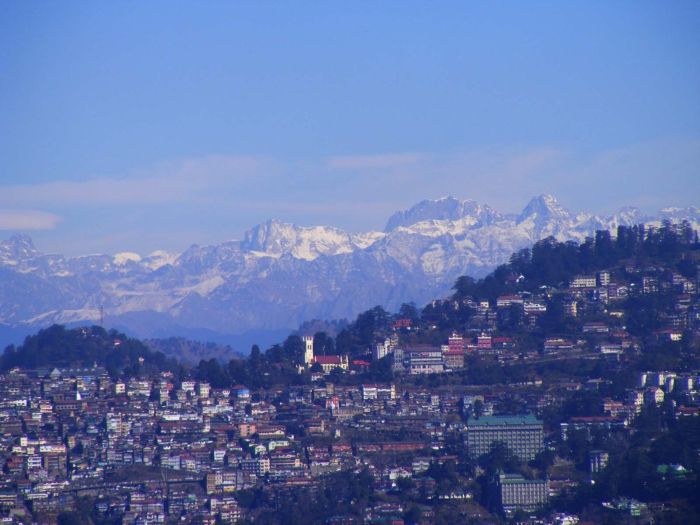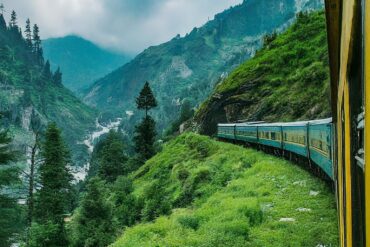
Immediately:
1. Keep the hillside drains along roads clear and free to debris to avoid water flowing onto the road and run off anywhere down the hill. Many will say that this is the PWD’s work, which for various reasons will never happen. But with most of our drains clogged, it is we who will pay the price and not the PWD. Panchayats could be allowed to use MNREGA funds for this purpose. Importantly, the people living along the roads have to ensure that road drains in their vicinity remain clear during the monsoon. What the PWD must ensure is that there are proper deep drains along all hill roads in the state. MNREGA could again come to the rescue here. Farmers with land along the road could be incentivised to dig small ponds or ditches (lined with high density polythene sheets) and channel the water from roadside drains into these ponds.
2. Contour trenches can be a quick and very effective way to retain huge volumes of rain water on the hillsides and give it a chance to percolate into the ground. It is also a very good water conservation and recharge measure. Staggered contour trenches, especially higher up on the hillside can greatly reduce and restrict run off in case of cloud bursts. Higher altitude Micro watersheds with substantial human settlements could be taken up on priority.
3. Wherever there is a land slip, it must be planted up closely on priority either by the PWD or the forest department. Small plants like agave, yucca, vitex (bana), adatodha, bamboo, ipomeas etc.; also known as Bio-engineering species, are quick to establish and grow, stabilising the loose soil within one season. Such species are also not palatable to cattle and can survive grazing pressures. Even Panchayats can be involved in this as well as local women and youth groups. The limiting factor will be whether the forest department has any or enough rooted stock of these species in their nurseries?
Short Term (within 3 -4 years):
1. Give a big push to roof water harvesting (RWH). Affordable models of RWH are available and suitable incentives (more to people living at higher altitudes) can be offered. All government building must mandatorily have RWH within the next 3 years. RWH could also become a game changer in the availability of water in the hills.
2. Staggered contour trenches must cover all the forests of sub-catchments of hydro-electric projects within the next 3 to 4 years and be financed by CAMPA (Catchment Area Management and Planning Authority) funds.
3. A network of intelligently located rain gauges be put in place on priority. These need to be linked to either district or state level Early Warning Systems in case of rainfall crossing normal limits. This should be easier to put in place and make functional than unwieldy District Level Disaster Management cells or committees.
4. Cumulative Environmental Impact Assessment for hydro electric projects in river basins must be made mandatory and overseen by the Courts.
Long Term (5 years and more):
The problem with longer term interventions is that they will need more time than the tenure of any one government and will need statesmen who can look beyond the next election. Something that itself looks like a very long term prospect. No?
1. Reforestation and afforestation has to be made to work. Plantations done on large scale by the forest department MUST survive and not just be target fulfilment under the 20 Point programme. Expertise and funds are available, but political will is absent.
2. Road building norms suitable for the mountains must be enforced even if it means fewer new roads. Proper muck disposal from roads and building activities has to be ensured and concerned departments held accountable.
3. Himachal needs to switch from conventional tourism to genuine eco-tourism where primarily there is control on the number of visitors accessing a particular site or area. For example we don’t have to irretrievably wreak the ecology of the Rohtang pass before adequate regulatory measures are put in place.
On the face of it these suggestions may appear to be quite straightforward, but why they haven’t worked and will not work is because underlying these simple looking things are huge, opportunistic political economies and our feudal, patronage dispensing mind sets. Actually that is real disaster wrecking havoc with our present, the future and our fair and wondrous state.
Disclaimer: I do not expect any politician or bureaucrat of consequence to read this, let alone consider taking action along these lines. May be it is for the ‘people’ to prevail on the government or political parties to explicitly mention these in their next election manifestos?
Nodnat – is a pen name that the writer with deep knowledge of Himalayan flora and fauna and a keen environmentalist has adopted. He hails from Kotgarh, in Shimla Hills and retired as Principal Chief Conservator of Forests from Himachal Pradesh forest department.




Dear Editor,
‘GREEN GOLD’ BY JOHN D . This is a must watch documentary.
http://www.youtube.com/watch?v=YBLZmwlPa8A
It shows that China restored degraded ecosystem of hilly region about the size of Netherland within five years. The experiments replicated in Ethiopia, Jordan and other countries with the same result. And all of this at low cost, using local species, some presumed to be extinct grew out of nowhere.
If you wish I can write a review for you with my experience of evaluating 121 watersheds in India including many in Una and Chamba.
Kind regards
Arun
Dear Arunji
I am working as Project Director Distt Watershed Dev. Agency Kangra, Kindly share some of your evaluation reports with me through email “[email protected]”
Thankyou for exposing me to the documentary by John Liu.
Regards
Pooja Chauhan
Excellent article! Thank you!
This is indeed a great article, with proper planning, we can make a difference.